Transcription of CT VW Proposed State Mitigation Plan
1 2017. Proposed State of connecticut Mitigation plan under Volkswagen Vehicle Partial Consent Decree, Appendix D. connecticut Department of Energy and Environmental Protection Table of Contents I. BACKGROUND .. 1. II. connecticut 'S AIR QUALITY 1. A. NOx and OZONE .. 2. B. CLIMATE CHANGE .. 3. III. Mitigation plan : OVERVIEW and GOAL .. 4. IV. AVAILABLE FUNDING AND ELIGIBLE APPLICANTS .. 5. V. CATEGORIES OF ELIGIBLE Mitigation PROJECT TYPES .. 6. A. FUNDING PRIORITIES .. 6. B. FUNDING ALLOCATIONS .. 8. i. On-Road Heavy Duty Vehicles .. 9. ii. Non-Road Equipment .. 10. iii. Commercial Marine Vessels .. 12. iv. Locomotives .. 13. v. Light Duty Zero Emission Vehicle Supply Equipment .. 14. vi. Diesel Emission Reduction Act (DERA) 15. VI. ANTICIPATED BENEFITS .. 16. A. ENVIRONMENTAL BENEFITS .. 16. B. ENERGY AND ECONOMIC BENEFITS .. 17. APPENDICES .. 19. APPENDIX A: ELIGIBLE Mitigation PROJECT ADMINISTRATIVE EXPENDITURES .. 19. APPENDIX B: DEFINITIONS.
2 20. APPENDIX C: PUBLIC COMMENT PERIOD ACTIVITIES .. 23. I. BACKGROUND. On October 25, 2016, a Partial Consent Decree1 was approved between the United states , California, and the defendants to address installation and use of emissions control defeat device software (defeat devices). The defendants were the Volkswagen (VW) Corporation and its subsidiaries. The software was installed in approximately 500,000 model year 2009 through 2015 VW and Audi branded diesel vehicles, of which an estimated 11,911 vehicles were sold/leased in connecticut . The use of the defeat devices has resulted in increased emissions of nitrogen oxide (NOx) in connecticut and throughout the United states . NOx significantly contributes to the formation of ground level ozone which negatively impacts the respiratory system and cardiovascular health. One of the goals of the Partial Consent Decree is to offset the excess NOx emissions. The Partial Consent Decree, among other actions contained within, establishes an Environmental Mitigation Trust (Trust) which will provide funds to all fifty states , the District of Columbia, Puerto Rico and federally recognized tribes, to implement actions to counter the air quality impacts of the excess NOx emissions resulting from the use of the defeat devices.
3 The initial allocation to the State of connecticut ( State ) under the Trust is approximately $ million dollars. The Partial Consent Decree establishes a process for states and tribes to receive the funds and requires the development of this Mitigation plan , which summarizes how the State intends to use its allotted funds. The Partial Consent Decree also requires that this document be made available for public review and comment. This Mitigation plan will also set out the process by which the connecticut Department of Energy and Environmental Protection (DEEP). will administer the funds in the State and describe the types of Mitigation actions or projects eligible for funding under the Trust along with a general description of the expected ranges of emission benefits. II. connecticut 'S AIR QUALITY CHALLENGES. On April 11, 2016, the Environmental Protection agency (EPA) made a final determination that connecticut failed to attain the 2008 8-hour ozone National Ambient Air Quality Standard (NAAQS).
4 Based on 2012-14 ambient air monitoring data2, connecticut was reclassified from marginal to moderate nonattainment and must achieve significant reductions in NOx emissions in order to attain the ozone NAAQS. The chart below shows the distribution of NOx emissions across the State 's economic sectors, with the transportation sector being the major contributor. Transportation emissions significantly impact the State 's air quality and attainment 1. Partial Consent Decree: 2 EPA Final Rule: Determinations of Attainment by the Attainment Date, Extensions of the Attainment Date, And Reclassification of Several Areas for the 2008 Ozone National Ambient Air Quality Standards, April 11, 2016. 1. designation, being the source of 67% of the State 's NOx emissions, an ozone precursor; and 41% of its greenhouse gas (GHG) emissions (see Figures 1 and 3). All NOx Emissions in CT (2014). Other 1% Electricity Generation 3%. Commercial & Industrial Waste Disposal 11%.
5 6%. Residential 12%. Transportation 67%. Figure 1: Sources of NOx in connecticut (2014 NEI). A. NOx and OZONE. NOx reacts in the atmosphere, in the presence of sunlight, to form ground-level ozone (smog). The adverse health effects of ozone and diesel exhaust are well documented3, 4. These studies show that ozone can irritate the respiratory system and affect lung function, even in otherwise healthy individuals. Exposure to high levels of ozone can enhance people's sensitivity to asthma-triggering allergens such as pollen and dust mites, and can also increase the frequency and severity of asthma Ozone levels in the State are also significantly affected by the transport of ozone, as well as NOx and other precursors, from upwind states . Predominant weather patterns combined with connecticut 's location relative to upwind emissions sources makes the State particularly vulnerable to levels of pollution transport that at times exceed the 8-hour ozone NAAQS.
6 Additionally, the State continues to experience increases in vehicular activity, being a thruway 3 EPA Health Assessment Document for Diesel Engine Exhaust (2002): 4 Diesel Exhaust and Health: Remarkable Progress, Lingering Concerns (2012): 09/ 5 Health Effects of Ozone in the General Population: effects-ozone-general-population 2. between New York and Boston. Vehicle miles traveled in the State has increased by more than over the last two Mobile source emissions, along with pollution from these upwind sources, generates air pollution that negatively impacts air quality and public health in the State . B. CLIMATE CHANGE. There are many observed changes to the climate, such as rising temperatures and shifting snow and rainfall patterns, linked to increasing levels of GHGs in our In 2008, connecticut passed the Global Warming Solutions Act, which established GHG targets of at least ten percent below the level emitted in 1990 by 2020 and at least eighty percent below the level emitted in 2001 by To that end, connecticut continues to address climate change in a meaningful way by identifying new strategies and developing and supporting forward thinking policies and legislation.
7 GHG emissions from transportation, primarily carbon dioxide, have increased nationwide by about 17% since 19909, and will continue to rise unless there is substantial reduction in the use of fossil fuels. Approximately 41% of connecticut 's GHG emissions are emitted by mobile sources (see Figure 2). Transportation-related pollution is a function of vehicle emissions, the carbon content of transportation fuel, and vehicle miles traveled. Transportation fuel and emissions are the most likely of these three elements to be impacted by Mitigation strategies. As such, promoting the use of zero or low emitting vehicles, providing a platform to facilitate the adoption of clean fuels and cleaner vehicles, and improving transportation system efficiencies will be a significant part of any efforts to mitigate both GHG and NOx emissions. 6. Federal Highway Administration Travel Monitoring, Traffic Volume Trends: 7. Climate Change Indicators: Greenhouse Gases: 8 Global Warming Solutions Act of 2008, connecticut General Statutes Section 22a-200a: 9.
8 Sources of Greenhouse Gas Emissions: 3. Greenhouse Gas Emissions for CT 2011. Agriculture 1%. Residential 18%. Waste 5%. Commercial Electric Power 9%. 16%. Industrial 10%. Transportation 41%. Figure 2: Distribution of connecticut 's Greenhouse Gas Emissions (EPA-SIT). III. Mitigation plan : OVERVIEW and GOAL. In accordance with the Partial Consent Decree, all potential Beneficiaries10 must create a Mitigation plan summarizing how the allocated funds will be used. Specifically, the plan must describe: The State 's overall goal for use of the funds, The categories of eligible Mitigation projects anticipated to be appropriate to achieve the stated goals and the assessment of the allocation of funds anticipated to be used for each type of eligible Mitigation project, What consideration will be given to the potential beneficial impact of selected eligible Mitigation projects on air quality in areas that bear a disproportionate share of the State 's air pollution burden, The anticipated ranges of emission benefits that would be realized by implementation of the eligible Mitigation projects identified , and The State 's process for seeking and considering public input on the plan .
9 10. All governmental entities initially allocated funds under the Environmental Mitigation Trust must apply to become a Beneficiary of the Trust. See Appendix D, Section of the Partial Consent Decree 4. In keeping with the above criteria, DEEP has developed this Proposed plan to provide the public insight into its vision and overall approach to utilizing the Mitigation funds allocated under the Trust. The primary goal of the State 's plan is to improve and protect ambient air quality by reviewing, analyzing and implementing eligible Mitigation projects that will: Improve air quality by achieving significant and sustained cost effective reductions in NOx emissions, Expedite deployment and widespread adoption of zero emission and near-zero emission vehicles and engines, and Support statewide energy, environmental and economic development goals while also taking into account environmental justice considerations associated with each Proposed eligible Mitigation project.
10 The State has the discretion to adjust its objectives and specific spending strategy when necessary to achieve the plan 's goals and the State will update the plan as necessary. Any updates to the plan will be submitted to the Trustee and be made available on DEEP's public webpage addressing all VW settlement related issues, IV. AVAILABLE FUNDING AND ELIGIBLE APPLICANTS. Upon becoming a Beneficiary, connecticut will be eligible to receive $51,635,238. ( of the $ billion made available to states and Tribes) from the Trust as specified in Appendix D to the Partial Consent Decree. DEEP anticipates that Trust funds will be made available for Mitigation projects by the fall of 2017, and at that time eligible Mitigation project proposals will be solicited on forms provided by DEEP. The 2017 timeframe is subject to change because the Partial Consent Decree requires certain federal actions prior to beneficiaries being able to access funds from the Trust.









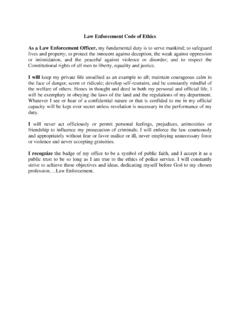
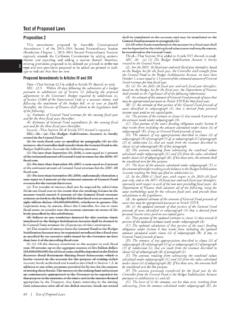

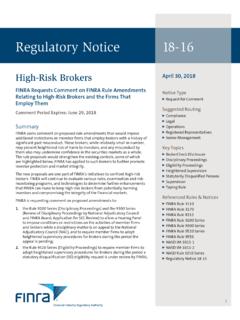
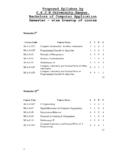
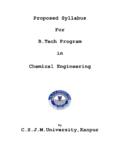
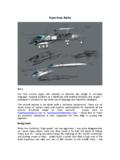
![[4830-01-p] DEPARTMENT OF THE TREASURY …](/cache/preview/6/5/b/9/7/a/d/5/thumb-65b97ad51eb0fa6035789892393b945e.jpg)